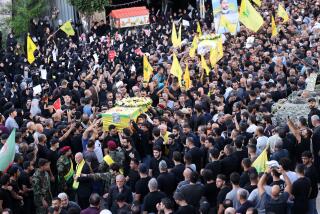Pressure cooker bombs common in South Asia
ISLAMABAD, Pakistan — Pakistani militants rely on a wide array of explosive devices to terrorize the South Asian nation, from suicide bomb vests and car bombs to rocket-propelled grenades.
But within that arsenal, pressure cooker bombs such as the ones probably used in the attack on the Boston Marathon on Monday are a mainstay, accounting for roughly half of the explosive devices defused in the country’s volatile northwest, a top Pakistani bomb disposal squad official says.
“We are defusing pressure cooker bombs almost daily,” said Shafqat Malik, chief of the bomb disposal squad for Khyber-Pakhtunkhwa province, which includes the violence-wracked city of Peshawar, Swat Valley and Pakistan’s militant-ridden tribal areas along the Afghan border. “They’re very common. Pressure cookers are one of the favorite IED containers for the terrorist groups.”
Since Malik began leading the province’s bomb squad in 2009, his officers have defused more than 5,000 explosive devices — roughly half of which have been pressure cooker bombs, he said. This year alone, Khyber-Pakhtunkhwa province bomb disposal technicians have defused about 125 bombs that have been contained in pressure cookers, he said.
The most recent prominent attack involving such an explosive occurred Sunday in the Swat Valley town of Banjot. Mukarram Shah, a member of the secular Awami National Party (ANP), was killed when a pressure cooker bomb planted near his car exploded.
The ANP, a longtime ally of President Asif Ali Zardari’s Pakistan People’s Party and the dominant political party in Pakistan’s northwest, has been rocked by a wave of terror attacks against its leaders and candidates ahead of parliamentary elections scheduled for May 11.
On Tuesday, a suicide bomber killed 16 people and injured 50 others at a late night ANP election meeting in Peshawar. One of ANP’s most prominent leaders, Ghulam Bilour, was at the meeting but survived the attack.
The Pakistani Taliban, the Al Qaeda-allied militant group responsible for the majority of suicide bombings and other acts of terror in Pakistan over the last five years, claimed responsibility for Tuesday’s blast, as well as several other attacks on ANP leaders and officials in recent weeks. It has also vowed to target members of two other secular parties, Zardari’s party and the Muttahida Qaumi Movement, which governs the country’s largest city and its commercial capital, Karachi.
Pakistani Taliban militants rely heavily on pressure cooker bombs, Malik said. because they allow pressure to build up inside the steel before the blast occurs, creating a more intense explosion.
“Blast waves don’t escape suddenly — the pressure builds up before the cooker gets broken,” Malik said. “So the effect can be more lethal compared to other kinds of containers. The pieces of the cooker move outward like projectiles, hitting the target like a bullet.”
A drawback to pressure cooker bombs, Malik says, is that the blast radius is reduced because a significant portion of the energy generated by the explosive agent is expended in the break-up of the cooker’s thick steel walls.
The blast radius of a pressure cooker bomb depends on a variety of factors, including the size of the cooker. But typically, the area in which a pressure cooker bomb can cause lethal injuries is about 27 yards, Malik said.
Other improvised explosive devices, or IEDs, can disperse shrapnel over a greater distance.
Pakistani militants often detonate pressure cooker bombs by remote control — with a cellphone, for example — and usually bury the devices in the ground, Malik said.
ALSO:
Blast in India’s high-tech capital, Bangalore, wounds 16
Pakistani Taliban denies involvement in Boston bomb blasts
Thousands gather for ‘Iron Lady’ Margaret Thatcher’s funeral
More to Read
Sign up for Essential California
The most important California stories and recommendations in your inbox every morning.
You may occasionally receive promotional content from the Los Angeles Times.










